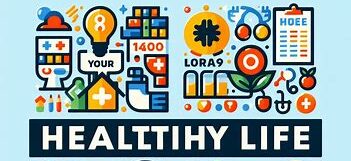In the world of digital marketing, understanding the marketing funnel is crucial for businesses aiming to maximize their conversion rates. Analyzing the journey that customers take from initial awareness to final purchase provides valuable insights into consumer behavior. By optimizing the funnel, businesses can identify key areas for improvement and implement strategies to increase conversions. This process involves a deep dive into each stage of the funnel, from attracting potential customers to retaining loyal clients. Implementing effective strategies for funnel optimization can lead to significant growth and success for businesses in today’s competitive market.

Understanding the Marketing Funnel
In the realm of digital marketing, understanding the marketing funnel is crucial for businesses aiming to maximize their conversion rates and optimize their marketing strategies. The marketing funnel, also known as the sales funnel, represents the journey that a potential customer takes from being aware of a product or service to making a purchase. It is divided into several stages, each with its own unique characteristics and goals. 🌟
The Awareness Stage
The top of the funnel is the awareness stage, where the focus is on attracting a wide audience and generating interest in the brand. This is often done through various marketing channels such as social media, content marketing, and online advertising. The key metrics to measure at this stage include website traffic, social media engagement, and brand visibility. By analyzing these metrics, marketers can gauge the effectiveness of their awareness-building efforts. 📊
The Consideration Stage
As potential customers move down the funnel, they enter the consideration stage. Here, the goal is to nurture leads and provide them with valuable information to help them make informed decisions. Email marketing, webinars, and personalized content are commonly used tactics in this stage. Marketers can track metrics such as email open rates, click-through rates, and content downloads to assess how well they are engaging with their audience and guiding them through the consideration phase. 📧
The Decision Stage
The next stage in the funnel is the decision stage, where leads are on the verge of making a purchase. Marketers focus on providing incentives, offers, and testimonials to encourage conversions. Conversion rate, cart abandonment rate, and customer acquisition cost are important metrics to monitor in this stage. By optimizing the decision stage, businesses can increase their chances of turning leads into paying customers. 💰
The Retention Stage
Finally, at the bottom of the funnel is the retention stage, where the goal is to retain customers and turn them into loyal brand advocates. Customer satisfaction surveys, repeat purchase rate, and customer lifetime value are key metrics to track in this stage. By delivering exceptional customer service and personalized experiences, businesses can build long-lasting relationships with their customers and drive repeat business. 🤝
In conclusion, by understanding the marketing funnel and optimizing each stage accordingly, businesses can enhance their overall marketing performance and increase their conversion rates. It is essential to continuously analyze data, experiment with different strategies, and adapt to changing market trends to stay ahead of the competition. With a well-defined marketing funnel in place, businesses can effectively guide prospects through the buyer’s journey and ultimately drive success. ✨
Analyzing Conversion Rates
When it comes to optimizing your marketing funnel for increased conversion rates, data analysis is key. By closely examining each stage of the funnel and identifying areas for improvement, you can make strategic adjustments to drive more conversions. Conversion rate optimization (CRO) is a crucial aspect of any marketing strategy, as it directly impacts your bottom line.
Important Metrics to Consider
One key metric is the conversion rate itself, which measures the percentage of visitors who take a desired action on your website, such as making a purchase or signing up for a newsletter. By tracking this metric over time, you can gauge the effectiveness of your marketing efforts and identify trends that may impact conversion rates.
Another important metric to consider is the bounce rate, which measures the percentage of visitors who leave your site after viewing only one page. A high bounce rate can indicate that your landing pages are not engaging or relevant to visitors, leading to missed conversion opportunities. By optimizing your landing pages and improving the user experience, you can reduce bounce rates and increase conversions.
Furthermore, analyzing the traffic sources that drive visitors to your site is essential for understanding where your most valuable leads are coming from. By identifying which channels are generating the highest conversion rates, you can allocate your marketing budget more effectively and focus on acquiring high-quality leads.
In addition to metrics, it’s important to consider the user journey through the marketing funnel. By mapping out the different touchpoints that a user interacts with before converting, you can identify potential bottlenecks or areas where users are dropping off. By optimizing each step of the funnel to provide a seamless user experience, you can increase the likelihood of conversion.
Overall, analyzing conversion rates is a critical component of any marketing strategy. By leveraging data and metrics to identify areas for improvement, you can optimize your marketing funnel for increased conversions and drive business growth. Remember, continuous testing and iteration are key to ongoing success in conversion rate optimization.
Optimizing the Funnel for Increased Conversions
Are you looking to boost your conversion rates and drive more sales? Optimizing your marketing funnel is the key to achieving your goals! By analyzing each stage of the funnel and making strategic adjustments, you can maximize the number of leads that convert into customers. Let’s dive into some expert tips and tricks to optimize your funnel for increased conversions! 💡📈
Track and Measure Performance
First and foremost, it’s essential to track and measure the performance of each stage of your funnel. Utilize tools like Google Analytics to gather data on visitor behavior, conversion rates, and drop-off points. By understanding where your funnel is leaking leads, you can pinpoint areas for improvement and make data-driven decisions to optimize the flow.
Ensure Seamless Transition
One crucial aspect of funnel optimization is ensuring a seamless transition between each stage. Make sure your messaging is consistent and compelling throughout the entire journey. From the initial ad or landing page to the final purchase confirmation, maintain a cohesive brand voice and value proposition that resonates with your target audience.
Implement A/B Testing
Another effective strategy for increasing conversions is implementing A/B testing. Experiment with different variations of your landing pages, call-to-action buttons, and email campaigns to identify what resonates best with your audience. By continuously testing and refining your approach, you can fine-tune your funnel for maximum effectiveness.
Personalization is Key
Personalization is also key to driving conversions in today’s competitive market. Tailor your messaging and offers to meet the specific needs and preferences of individual leads. Use dynamic content and personalized recommendations to create a more engaging and relevant experience for each visitor, increasing the likelihood of conversion.
Optimize for Mobile Users
Furthermore, don’t overlook the importance of optimizing for mobile users. With more people browsing and shopping on their smartphones, it’s crucial to ensure that your funnel is mobile-responsive and user-friendly. A seamless mobile experience can significantly impact conversion rates and customer satisfaction.
In conclusion, optimizing your marketing funnel is a continuous process that requires careful analysis, testing, and refinement. By focusing on tracking performance, maintaining consistency, testing variations, personalizing content, and prioritizing mobile optimization, you can enhance the effectiveness of your funnel and drive increased conversions. Implement these strategies today and watch your conversion rates soar! 🚀🌟
Implementing Strategies for Funnel Optimization
In the world of digital marketing, optimizing the marketing funnel is crucial for increasing conversion rates and maximizing ROI. Funnel optimization involves analyzing each stage of the customer journey, identifying bottlenecks, and implementing strategies to improve the flow of traffic through the funnel. By fine-tuning each step of the funnel, marketers can effectively guide prospects towards making a purchase decision.
A/B Testing for Funnel Optimization
One key strategy for funnel optimization is A/B testing. By testing different variations of landing pages, email campaigns, and calls-to-action, marketers can gather valuable data on what resonates best with their target audience. This data-driven approach allows for continuous refinement and improvement of the funnel, leading to higher conversion rates and increased revenue.
Reducing Friction in the Customer Journey
Another important aspect of funnel optimization is reducing friction in the customer journey. Friction points such as complicated checkout processes, unclear messaging, or slow loading times can deter prospects from completing a purchase. By streamlining the user experience and addressing pain points, marketers can create a seamless journey that encourages conversions.
Personalization for Enhanced Conversion
Furthermore, personalization plays a significant role in funnel optimization. By segmenting audiences based on demographics, behavior, or interests, marketers can deliver tailored content that speaks to the individual needs of each prospect. Personalized recommendations, targeted offers, and customized messaging can significantly impact conversion rates and drive customer loyalty.
Tracking KPIs for Success
Moreover, tracking key performance indicators (KPIs) is essential for monitoring the success of funnel optimization strategies. Metrics such as conversion rate, bounce rate, and average order value provide valuable insights into the effectiveness of marketing campaigns and help identify areas for improvement. By regularly analyzing KPIs, marketers can make data-driven decisions to optimize the funnel for maximum results.
In conclusion, implementing strategies for funnel optimization is a continuous process that requires a deep understanding of the customer journey, data-driven insights, and a commitment to testing and refinement. By optimizing each stage of the funnel, reducing friction, personalizing the user experience, and tracking KPIs, marketers can enhance conversion rates, drive revenue, and ultimately achieve marketing success. Let’s optimize those funnels and watch the conversions soar! 🚀📈
In conclusion, understanding the marketing funnel, analyzing conversion rates, optimizing the funnel for increased conversions, and implementing strategies for funnel optimization are crucial steps for any business looking to improve its online performance. By continuously monitoring and refining each stage of the funnel, companies can identify areas for improvement and take targeted actions to enhance the overall conversion rate. It is essential to leverage data-driven insights, user feedback, and industry best practices to create a seamless and engaging customer journey that ultimately leads to higher conversion rates and business success. By prioritizing funnel optimization and adopting a proactive approach to marketing strategies, businesses can stay ahead of the competition and achieve sustainable growth in the digital landscape.





